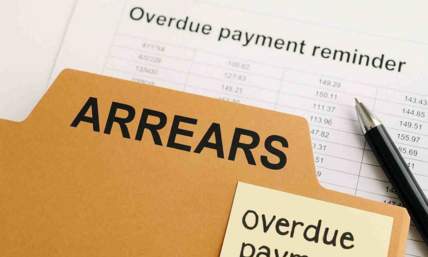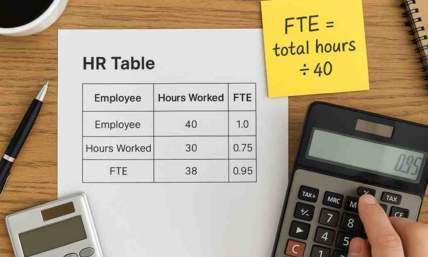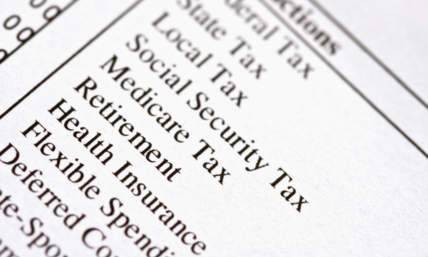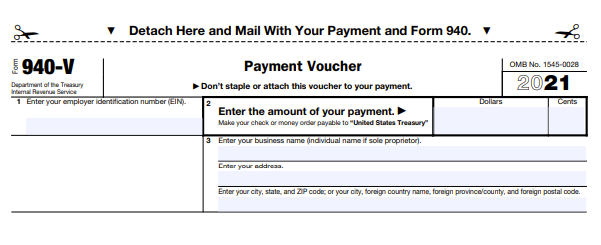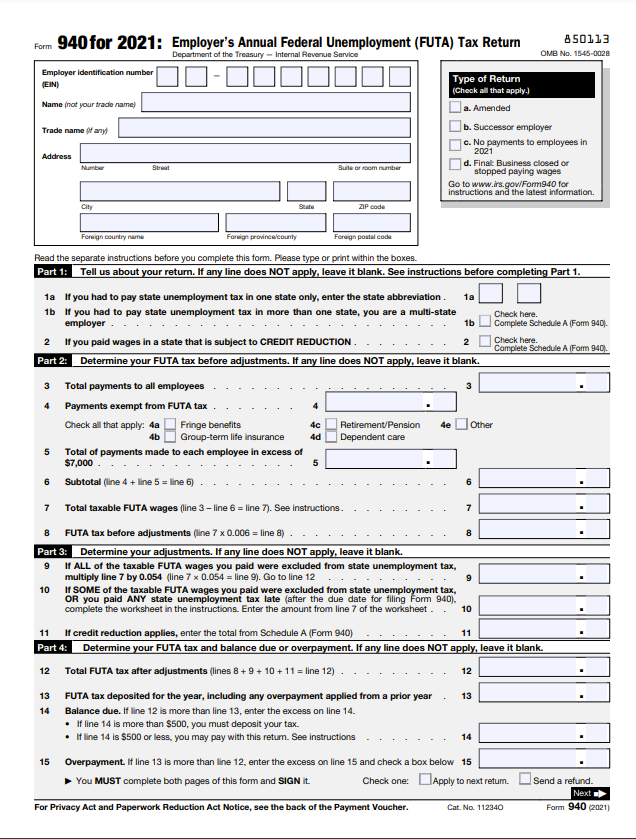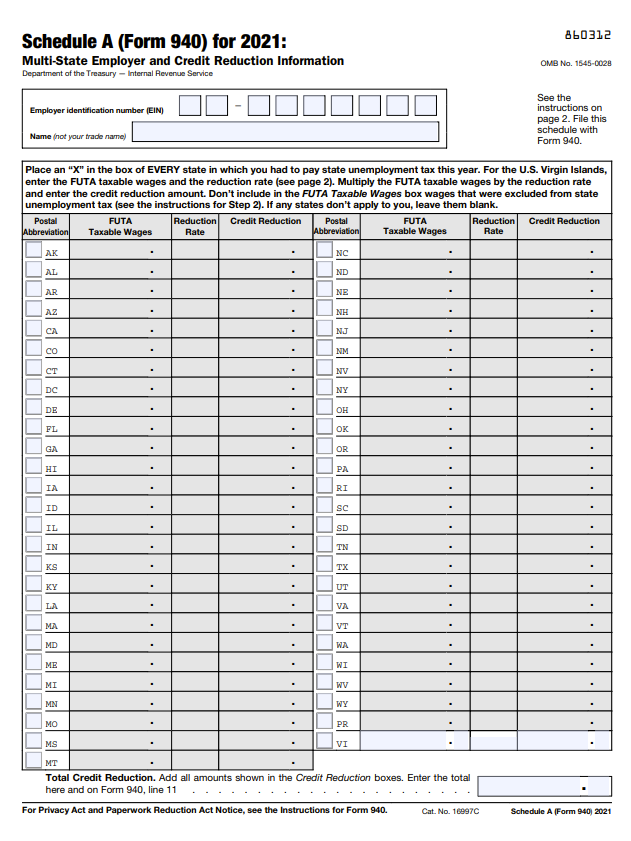There are seven parts to the Form 940, in addition to your identifying information and the paid
preparer sections at the top and bottom of the form.
Identifying Information
The top section of the Form 940 is where you will enter your employer identification number
(EIN), name, trade name, and address. Name is the legal business
name, while a trade name is a
DBA, if any.
Checkbox For Type of Return
The top section of the Form 940 is where you will enter your employer identification number
(EIN), name, trade name, and address. Name is the legal business
name, while a trade name is a
DBA, if any.
Part 1: Tell us about your return
Part one asks about your state unemployment tax situation. If you pay unemployment taxes in only
one state, enter the state abbreviation in line 1a. If you paid in multiple states, check line
1b and complete Schedule A. If you paid wages in a credit reduction state, check line 2 and
complete Schedule A.
Part 2: Determine your FUTA tax before adjustments
Part 2 calculates your FUTA tax based on your payroll
data. Line 3 is where you will enter total
payments you made to all employees. Line 4 removes payments exempt from FUTA tax. If you have
any of these payments, you will need to check the boxes that apply:
- 4a Fringe benefits
- 4b Group-term life insurance
- 4c
Retirement/pension
- 4d Dependent care
- 4e Other
Line 5 removes payments made to each employee in excess of the $7,000 of wages subject to FUTA
tax. Line 6 sums the totals of lines 4 and 5 to calculate the entire reduction amount. Line 7
removes line 6 from line 3, and it is your total taxable FUTA wages.
Line 8 multiplies your total taxable FUTA wages from line 7 by 0.6% or 0.006. This calculates
your FUTA tax before adjustments, as if you received the maximum 5.4% credit from state
payments.
Part 3: Determine your adjustments
Line 9 asks if all of your taxable FUTA wages from line 7 were excluded from state unemployment
payments. If so, multiply line 7 by 5.4% or 0.054 and enter the result in line 9.
Line 10 asks if some of the taxable FUTA wages from line 7 were excluded or if you made any
state unemployment payments late. If so, enter the amount from the worksheet from the Form 940
instructions.
If you are in a credit reduction state, enter the total from the Schedule A to the Form 940 in
line 11.
Part 4: Determine your FUTA tax and balance due or overpayment
Part 4 is where you determine how much FUTA tax you owe and calculate any overpayment or unpaid
balance. The adjustments from part 3 add back to your FUTA tax before adjustments from part 2,
and the result is entered on line 12.
Line 13 is where you enter your FUTA tax deposits made during the year. Line 14 calculates your
balance due if line 12 is more than line 13. If the total is greater than $500, you have to
deposit your tax payment. If the total is less than $500, you can submit the Form 940-V payment
voucher with the tax return.
If line 13 is more than line 12, you are due a refund for an overpayment. You can either check a box
to apply it to the next return or send a refund.
Part 5: Report your FUTA tax liability by quarter only if line 12
is more than $500
If your total FUTA liability from line 12 is greater than $500, you will fill out part 5. It
asks for the FUTA liability for each quarter. Lines 16a, 16b, 16c, and 16d are the four quarters
of the year. Line 17 sums the total tax liability for all four quarters. This number equals line
12.
Part 5: Report your FUTA tax liability by quarter only if line 12
is more than $500
If your total FUTA liability from line 12 is greater than $500, you will fill out part 5. It
asks for the FUTA liability for each quarter. Lines 16a, 16b, 16c, and 16d are the four quarters
of the year. Line 17 sums the total tax liability for all four quarters. This number equals line
12.
Part 6: May we speak with your third-party designee?
If you have an employee, paid tax
preparer, or another person who is allowed to talk to the Internal Revenue Service about
your Form 940, check the box for yes and enter their name and phone number. You can assign them
a 5 digit PIN to use when speaking with the Internal Revenue Service. If not, check the box for
no.
Part 7: Sign here
Your form is not complete until you appropriately sign and date it and enter a daytime phone
number.
Paid Preparer Use Only
If you used a paid preparer, their information will go at the bottom of the Form 940.











